Bangladesh stops open defecation in just over a decade
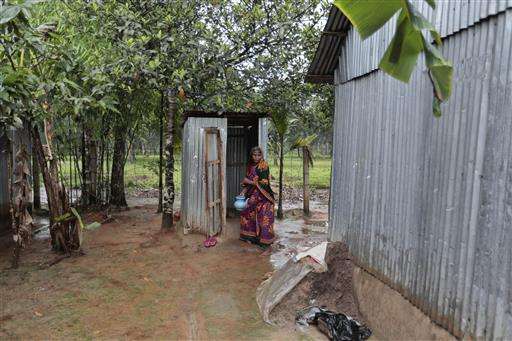
Answering nature's call was once a nightmare for Rashida Begum, who had to creep around the jungle for a suitably private spot. Her home had no toilet, like the thousands of others in her crowded cluster of farming villages outside the capital.
In just over a decade, that's all changed, in her neighborhood and many others.
Through a dogged campaign to build toilets and educate Bangladeshis about the dangers of open defecation, the densely populated South Asian nation has managed to reduce the number of people who defecate in the open to just 1 percent of the 166 million population, according to the government—down from 42 percent in 2003.
"Once it was our habit to go to the fields or jungles. Now, it is shameful to us," Begum said in Bormi, a cluster of poor farming villages just outside Dhaka, the capital. "Even our children do not defecate openly anymore. We do not need to ask them; they do it on their own."
Bangladesh's success in sanitation—something so far unattained by its wealthier neighbor to the south, India—came from a dogged campaign supported by 25 percent of the country's overall development budget.
"The government has made a huge commitment," said Akramul Islam, director for water, sanitation and hygiene of the development NGO Brac. "The government decided that funds should go to the extreme poor who do not have latrines. So that basically gives a big push from the public sector for spending on sanitation."
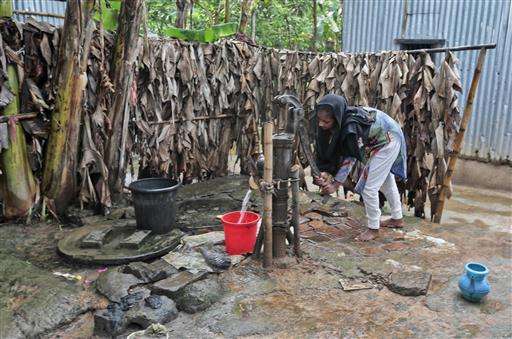
The government's engineers also partnered with village councils and charities to spread the message on how toilets are key to better health. Rising incomes—moving from an average of $1,154 in 2012-13 to $1,314 in the last fiscal year, according to the World Bank—also helped to drive demand, Islam said.
Activists say small-scale surveys show that the campaign has improved public health, though there are not yet any government statistics to prove it more broadly.
"We see clearly that there is a decline in waterborne diseases and diarrheal diseases, so there is a clear link there," Islam said, while acknowledging that the improvement was something "we have to study."
Begum said her children have had no stomach illnesses since she installed an in-house toilet.
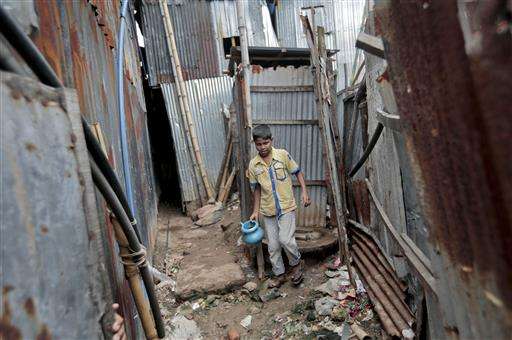
Open defecation is considered a major public health menace, causing childhood diarrhea, parasitic worm infections and other scourges that contribute to childhood stunting, malnutrition and tens of billions of dollars in lost productivity every year. Diarrheal diseases kill 700,000 children every year in India alone—most of which could have been prevented with better sanitation.
India has spent about $3 billion since 1986 on campaigning and sanitation programs, but has not come close to Bangladesh's success. Two-thirds of India's 1.25 billion people still use the great outdoors as their public latrine. About half of Nepal's 30 million people and about 20 percent of Pakistan's 182 million also do not have facilities at home.
Indian Prime Minister Narendra Modi has made public sanitation a hallmark of his "Clean India" drive, promising that every home would have a toilet by 2019 and setting aside hundreds of millions of dollars for the job. India has already built around 20 million toilets, but still has another 111 million to build to reach its goal.
Bangladesh's sanitation victory didn't come easy. Millions of dollars from the government and charities were spent, and campaign volunteers said they worked hard to change public attitudes and habits.
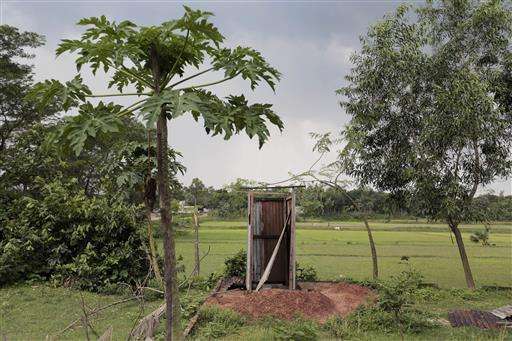
Many villagers—particularly men—preferred going outdoors, where they could think in private, survey their lands or just feel the evening breeze or gaze at the sky. For women, however, having no toilet was both a nuisance and a danger, as many said they had to wait for nightfall for privacy.
"We had to cover our noses during rainy season because of the bad smell," said field campaigner Al Amin Akand of the charity Plan International, which works on community issues. "We had to work for years to motivate the villagers."
Back in 2008, most people in Bormi had no choice but to use the surrounding forests to defecate.
"We had to do fierce campaigning," going door-to-door for years, said Mohammed Badal Sarker, chairman of a local village council. The council even turned children into whistleblowers—literally.
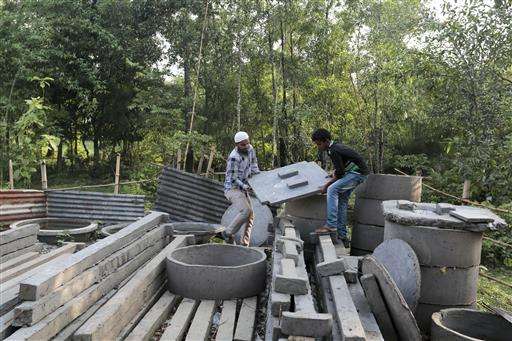
"We provided schoolchildren with whistles to alert the villagers. It worked like magic," the chairman said. Children were encouraged to shout slogans like "Defecating in the open is the enemy of the people" and "No one will marry your daughter if you do not have a toilet at home."
The drive has even sparked a new industry in household sanitation, with small businesses cropping up across the country to sell the components for making inexpensive latrines. All it takes, they say, is an investment of $12 to $60 to buy two to three concrete rings and a concrete pan.
"Now you will not find a home without a sanitary latrine," Sarkar said.
There is still cause for concern. Bangladesh's overpopulated urban areas are proving to be more of a challenge, mostly because the opportunity for contaminating the water supply is much greater.
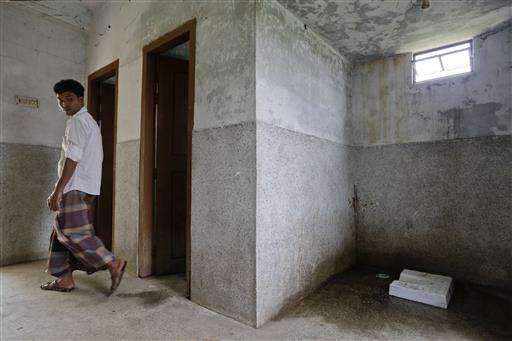
"People might be using a toilet or a latrine, but then where does the human waste go from there?" said John Sauer, senior technical adviser of the Washington-based Water, Sanitation and Hygiene Population Services International (PSI). Waste water could be dumped on a field where children play, or where food is grown. "We must address where the human waste goes and how it is treated, disposed or reused."
Still, Sauer said, the achievement of virtually eradicating open defecation in just a decade is astonishing.
"Bangladesh has a lot to teach the rest of the developing world," he said.
-
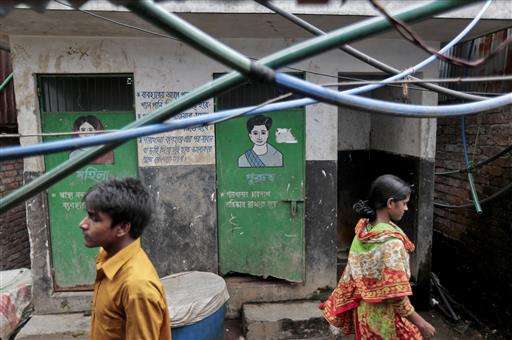
In this June 1, 2016 photo, Bangladeshis walk past a public toilet in a slum area in Dhaka, Bangladesh. Bangladesh's overpopulated urban areas are proving to be more of a challenge in the campaign for sanitation, mostly because the opportunity for contaminating water supply is much higher. (AP Photo/A.M. Ahad) -
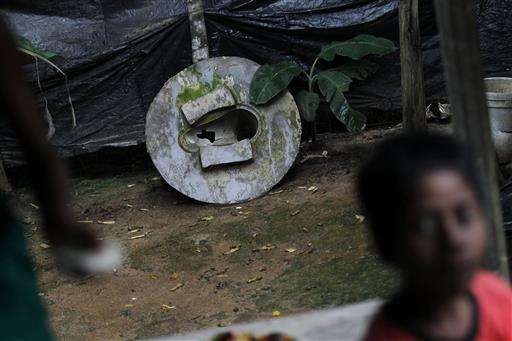
In this May 30, 2016 photo, a broken toilet seat stands in the backyard of a house in Bormi village, near Dhaka, Bangladesh. Through a dogged campaign to build toilets and educate Bangladeshis about the dangers of open defecation, the densely populated South Asian nation has managed to reduce the number of people who defecate in the open to just 1 percent of the 166 million population, according to the government, down from 43 percent in 2003. (AP Photo/A.M. Ahad)
© 2016 The Associated Press. All rights reserved.


















